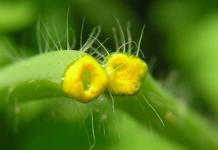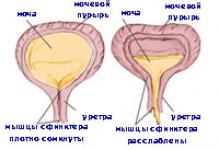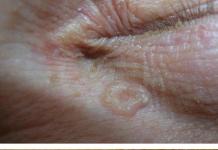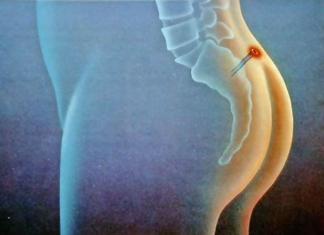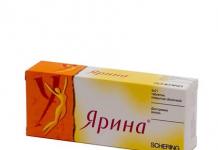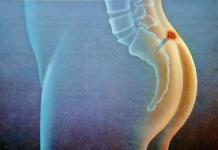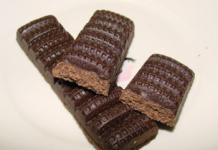As soon as the sun warms up in the spring, you can see butterflies fluttering over the grass. This is on Earth, there is a huge variety of their species. They are diurnal and nocturnal, large and small, they differ in life expectancy and type of nutrition. The first to appear in the spring is the lemongrass butterfly. She is one of the few that can survive the winter.
There are butterflies that are inconspicuous and pale, but there are such beauties that you can’t take your eyes off them. They get their color thanks to the arrangement and different shades of the smallest scales that cover their wings. Because of this, they become slippery, which helps butterflies to escape from enemies. And these beauties have a lot of the latter; not only birds love to feast on them.
Therefore, some butterflies have protective colors, for example, merging with the bark of a tree. Others, on the contrary, are protected by bright colors, colored spots similar to eyes. Such beauties are also in danger of being caught by humans.
Butterflies in Russia are very beautiful and diverse: swallowtail, purpletail, mother of pearl, iridescence, admiral - these names were given to them in connection with the peculiarities of the color and structure of the wings. Some get their name from what their caterpillars feed on: wren, cabbage, raspberry and plum tail.
In general, butterflies, like all insects, benefit by pollinating plants,

They provide food for birds and even help control weeds.
But many lay their eggs on and the hatched caterpillars cause great damage to agriculture. These include: By itself, it does not cause any harm, since it feeds on nectar, but its larvae live on cabbage and are capable of turning a head of cabbage into a lace skeleton.
One of the most common is the lemongrass butterfly. She belongs to the whitefish family. True, males are yellow-green in color, and females are white with a greenish tint. They have a special shape of wings, always with one orange spot on each. Thanks to its special structure, the insect practically merges with the plants.

The lemongrass butterfly lays eggs, one at a time, on the leaves of joster or buckthorn. Their larvae can feed only on these plants. That's why this butterfly is also called the butterfly. She herself feeds on nectar and carries pollen, pollinating plants. Of course, she also needs water. Butterflies drink dew or suck moisture from the ground. For this they have long proboscis.
Their caterpillars are inconspicuous, green in color, they hide well from enemies. After hatching from the pupa, the lemongrass butterfly feeds on nectar for the rest of the summer and reserves strength for wintering. In order to overwinter, she usually looks for old ivy. During the entire summer, only one generation of these insects hatches.
People have long been attracted by the beauty of butterflies. They called them living flowers. People have always collected collections by pinning these beauties to album sheets. But recently, live butterflies have become popular. Exhibitions are organized where people admire not only their beauty, but also their flight.
21.05.2017 13:38
10035
Which insects are the first to wake up in the spring.
In nature, among the diversity of living beings, insects occupy an important place. With the onset of cold weather, many of them hibernate. And what insects wake up first in the spring?
The very first insects in spring appear very early, when there may still be snow in some places. And this happens around the end of March.
At this time, near the water you can see a large number of stoneflies - rather large insects with a delicate, inconspicuous body, transparent wings riddled with veins and long thin antennae on the head. Her wings are folded over her body like a peaked roof
Stonefly larvae live in the water, and adult insects live on the shore. They fly poorly and therefore prefer to run - fortunately their slender legs allow them to do this.
Also, in early spring, bumblebees appear in gardens and parks. This is a large insect with a black body, a red fluffy collar, and a shaggy abdomen. The bumblebee has a special device on its paws - baskets for collecting pollen.
A serious, leisurely bumblebee busily flies around flower after flower in search of nectar and pollen. Noteworthy is the bass hum of the bumblebee, which can be heard even when it does not move its wings. Where does this sound come from?
It turns out that the buzzing is a very rapid contraction of the bumblebee's pectoral muscles. By moving its muscles, the insect thus warms itself. His body temperature is always +40° degrees, and even if it is only +10° outside. Bumblebees buzz especially loudly at three or four o'clock in the morning - the coldest time. They do this to warm their nest.
The ability to increase body temperature with such physical exercise allowed bumblebees to spread so far to the north, where there are no other plant pollinators besides them. Bumblebees live even in such cold places as Chukotka, Greenland, Alaska and the islands of Novaya Zemlya.
This insect is the best plant pollinator of all. In one day it can fly around thousands of flowers. The value of bumblebees is very high for people. After all, only pollinated plants can bear fruit, and due to the structure of their flowers, some of them can only be pollinated by bumblebees.
In order to preserve as many of these useful and beautiful insects as possible, a special reserve “Bumblebee Hills” was even created. After all, every destroyed bumblebee nest brings with it the loss of millions of seeds of clover and other field and meadow grasses.
Bumblebees make their homes on the ground. In the spring, the overwintered female sits on the ground, crawls under the foliage or into a burrow and makes cells there from a mixture of wax and pollen for future offspring.
Most butterflies overwinter as caterpillars or pupae, while wren and lemongrass overwinter as adult insects. It is for this reason that as soon as the snow melts, they immediately catch our eye.
The hives are the first to wake up - a bright, motley butterfly. Its wings are painted brick-red on top, along the front of the wing they have large black and yellow spots, and on the sides the wings seem to be trimmed with a braid of blue triangles with a black border.
This butterfly is called the nettle butterfly because only its caterpillars can eat stinging nettles. Hives can predict the weather, according to scientists who study butterflies. For example, if on a bright sunny day a butterfly hides in a shelter, this means that in a couple of hours it will rain and a thunderstorm will thunder.
A little later (about ten days), after hives, the lemongrass butterfly wakes up. The male and female of this butterfly are of different colors, although they are very similar. The female is pale yellow-green in color, and the male is bright yellow. Lemongrass with folded wings is difficult to notice: it looks like a yellow leaf.
This butterfly with a tasty name has one interesting feature: if it is suddenly disturbed, it falls to the ground, folding its wings and tucking its legs. So try to notice her later...
Already in the midst of spring, when many voracious lovers of greenery appear, ladybugs come to the aid of plants. This is a small bug with very convex, bright red, shiny wings that are covered with black dots.
Why was this insect called that? Does it look like a cow? The fact is that in case of danger, this bug secretes a drop of poisonous white-yellowish liquid, which is called “milk”. This is why he got his name.
The ladybug is one of the few insects that has the ability to completely destroy insect pests. From year to year they bring great benefits to people, preserving plantations of tea bushes, tangerines, lemons and other crops. Summer residents also love this beautiful little bug. Because it eats aphids - a small but very harmful insect for plants.
On May evenings, around deciduous trees you can see a rather large black-brown beetle with noticeable whisker bristles. This is the May beetle, or, as it is sometimes called, the May beetle.
It is interesting to watch how, opening its large, stiff wings, this insect rises into the air with a hum. The cockchafer lives only from twenty to forty days, after which it lays eggs, from which larvae then emerge, which live and develop underground for a very long time (three to four years!). And only in the fourth summer the larvae pupate, and a beetle emerges from the pupa.
These are the first spring insects.

Almost all gardeners know that spraying trees in the spring is a useful thing. But what exactly does garden cultivation do? What pests and diseases does spraying help combat? What and when to spray trees in April and May? How to make pest control treatment safe for beneficial insects? Learn more about spring garden protection.
Pest control: where they spend the winter and what they eat
There are a great many insect pests—apple trees and black currants alone have more than 200 of them. But you only need to fight those that actually cause significant damage. Based on their feeding method and the structure of their oral apparatus, pests are divided into two main groups: leaf-sucking and leaf-gnawing.
TO leaf-sucking include aphids, copperheads, bugs, thrips, scale insects, whiteflies, as well as mites, which are not insects. These pests pierce the leaf plate or bark and suck out the juice through the puncture. Therefore, they cannot be destroyed except by contact; the drug must destroy the integument of the body, as a result of which the pests die, or must cause paralysis of the respiratory systems.
But in the arsenal modern means As a means of protection, new generation drugs have appeared that penetrate the cell sap of the plant and become destructive to leaf-sucking pests, but do not accumulate in the plant itself, since after 2-3 weeks they completely decompose into harmless elements.
One of these drugs is the chemical poison “Phosbecid”. Plants treated with it cannot be eaten for 20 days. But there are also biological products “Iskra-bio” (“Agravertin”) and “Fitoverm”, after treatment with which fruits and greens can be eaten after 48 hours.
TO leaf-chewing insects include beetles and their larvae, butterfly caterpillars. In addition to insects, there are also mollusks: slugs, snails, crustaceans. They all feed directly on leaves, so they can easily be poisoned through gastric tract, - it is enough just to moisten the aerial part of the host plant with a poisonous drug.
As a rule, everything sucking insects overwinter on the branches of bushes and trees, located near the kidneys. And these insects are most vulnerable before the start of sap flow, when the average daily temperature is close to zero, since at this moment their chitinous covers begin to collapse to allow the larvae to get out of them. There is another moment when pests are vulnerable - late autumn, since at this time their chitinous covers have not yet become stronger.
The rest overwinter partly in the forks of branches or in crevices of the bark, but mostly - under a layer of foliage or in the top layer of soil right under the plantings, and come to the surface only when a green cone of leaves appears, when the bud scales move apart, that is, after the start of sap flow. Most of these insects first damage these opening young leaves, and then move into the buds at the moment of their protrusion (separation), therefore, they must be fought precisely at these moments.
But in no case should you treat the garden with chemicals at the time of flowering, since at this time beneficial insects emerge from the ground. And their destruction can lead to an ecological imbalance in the area, because their numbers are restored much more slowly than the number of insect pests.
There is also a whole group of pests, overwintering inside plants: gall midges, glass beetle, currant bud mite, raspberry fly larvae. They are especially difficult to deal with because they are practically impossible to reach using chemical means. All that remains is to manually collect mite-infested buds, cut out currant and raspberry stems with thickened galls, drying blackcurrant stems and drooping young raspberry shoots, after which all this must be immediately burned before the pests come out and spread throughout the garden.
First pest control treatment
This is spraying trees and bushes in early spring before sap flow begins, at the end of March - very beginning of April. Insect larvae and eggs die from contact with the drug. Therefore, you need to very carefully spray the entire tree (the entire bush) along all the branches and around the trunk in order to moisten the pests. When processing a garden, at least 10 liters of solution are consumed per mature tree, 5-6 liters per young tree, and at least 1.5-2 liters per bush.
It is best to use for spraying a concentrated solution of any mineral fertilizer listed below (per 10 liters of water):
500-600 g nitroammophoska,
or 600-700 g of azofoska,
or 400 g of potassium chloride,
or 500 g of potassium carbonate,
or 600-700 g of urea
or just 1 kg of table salt.
It is imperative to thoroughly spray the ends of the branches on which aphid eggs are laid, the skeletal branches in the forks of which some of the pests overwinter, and the soil in the tree trunk circles. With such spraying, salt metabolism in the pest cells is disrupted, which causes their death.
If such treatment is not done in the spring, then at the very beginning of sap flow insect pests will be born from eggs and larvae, but at this time our helpers - beneficial insects that feed on pests - are still sleeping and will come to the surface only during flowering, so protect There is no one to keep the garden free from pests except us.

Second garden treatment
If you did not treat the garden in early spring and did not destroy the nests of pests, then a second treatment will be required. It is often recommended to use one of the following drugs: “Inta-vir”, “Decis”, “Karate”, “Fury”, karbofos or its analogue “Fufanon”.
The first four drugs are highly toxic, therefore very effective, but at the same time they kill beneficial insects, bees and earthworms, since they decompose for about three weeks and destroy beneficial insects emerging from their shelters. And they absolutely cannot be used from the moment of flowering not only of the garden, but also of the coltsfoot, since at this time bumblebees appear and worms crawl out.
Karbofos and Fufanon are preferable to these drugs, primarily because they quickly, within 5-7 days, decompose even before beneficial insects appear, but are less effective, so they should not be used if there are a large number of pests.
All of these drugs kill pests by entering their intestines along with food and causing poisoning. Some pests will begin to feed at the moment of bud opening (green cone), while others will begin to feed at the moment of budding (separation and protrusion of buds). It is at these moments that you need to have time to cultivate the garden.
At this time there are already early green crops. When processing the garden, they must be covered with film.
Instead of the chemicals described above, you can use the same mineral fertilizers, but only their concentration should be 7-10 times lower, otherwise you can cause a severe burn to the opening buds and buds. We can recommend spraying a green cone with a 0.7% urea solution - this is 70 g (3 tablespoons) of urea per 10 liters of water.
Spraying infusions and decoctions of tobacco dust, citrus peels, onion peels or dry tansy, marigold seeds, garlic, and pine needles are effective.
- Tobacco dust. To prepare the solution, 400 g of tobacco dust is infused in 10 liters of water for 24 hours, then boiled for half an hour, then cooled and filtered. To spray, for every 10 liters of water you need to take 100 g of solution, adding 40 g of soap to it for better adhesion.
- Onion peel. Pour half a bucket of onion peel into a bucket of hot water, cover, leave for two days, strain and spray.
- Dry tansy. Pour 1 kg of tansy collected during flowering and dried into 10 liters of water and boil over low heat for 15 minutes, cool, strain. To spray, take 100 g of solution for every 10 liters of water, add 40 g of soap and spray.
- Garlic infusion. Chop 100 g of garlic, pour in 10 liters of water for a day, strain and spray.
- Infusion of pine needles. Pour 2.5 kg of needles of any coniferous species into 10 liters of water, stirring from time to time, leave for a week, strain, add another 20 liters of water and spray.
- Infusion of citrus peels. Soak 1 kg of citrus peels, pass through a meat grinder, pour in 3 liters of water, close tightly and leave for 5 days in the dark, strain, squeeze, bottle, seal. Use 100 g of solution per 10 liters of water as needed.
Aim to get on the underside of the opened leaves, as pests tend to be found there.
It is useful to place trapping belts made of corrugated cardboard on apple and pear trees, into which the caterpillars crawl, moving up the trunk. The top edge of the cardboard must be bent back like a roof; caterpillars cannot crawl over such an edge. Hunting belts are changed a couple of times a season and burned along with the pests lurking there.
The hunting belt can be made from plastic film. The lower edge is tied around the trunk like a skirt, and the upper edge is folded back like an umbrella. You can leave this belt on all summer long. Pests will not be able to crawl over the folded top edge.
Comment on the article "Diseases and pests of the garden: treatment in spring, April and May"
More on the topic “Treating the garden in spring from diseases and pests”:
Garden diseases and pests: treatment in spring, April and May. Work in the garden and vegetable garden in the spring. With the arrival of spring, a hot period begins for gardeners and gardeners in their summer cottages and other areas; they need to have time to complete all the work and prepare the ground for...
Girls, what do you use to treat trees and shrubs in the spring?) Garden treatment in the spring. Teach. Good afternoon everyone. First pest control treatment. This is spraying trees and bushes in early spring until currants and gooseberries are poured with boiling water when the snow melts a little, even...
Garden diseases and pests: treatment in spring, April and May. In gardens and dachas near Moscow, the lilac blossoms are ending, and soon its smell will be replaced by jasmine. How to properly prune lilacs after flowering?
This means that in April, the leaves begin to open and only in May, but how to shed them? 02/20/2015 13:16:40, Little Bunny. In April it is already late, the buds are starting to grow and they can be damaged. What and when to spray trees. Disease and pest control: spraying in spring.
Second treatment of the garden. Almost all gardeners know that spraying trees in the spring is a useful thing. There are two different preventative measures against fungal diseases and pests. Must be done every spring. First you need to figure out how the leaves curl?
Garden diseases and pests: treatment in spring, April and May. When processing a garden, at least 10 liters of solution are consumed per mature tree, 5–6 liters per young tree, and at least 1.5–2 liters per bush. how to get rid of pests. Whitewashing trees in autumn and spring.
Garden diseases and pests: treatment in spring, April and May. First pest control treatment. This is spraying trees and bushes in early spring until currants and gooseberries are poured with boiling water when the snow melts a little, it doesn’t even melt, but...
Garden diseases and pests: treatment in spring, April and May. There is also a whole group of pests that overwinter inside plants: gall midges, glass beetle, currant bud mite, processing apple trees in the spring. ...I find it difficult to choose a section. Cottage, garden and vegetable garden. Kizima Galina.
Garden diseases and pests: treatment in spring, April and May. But there are also biological products “Iskra-bio” (“Agravertin”) and “Fitoverm”, after treatment with which fruits and greens can be eaten after 48 hours. processing apple trees in spring. ...hard to choose...
a lot of pests. In the spring you need to save fruit trees and shrubs, which sprayer should you choose? One guy from the village had such a thing ruptured and was in the hospital... which one should I choose? Garden diseases and pests: treatment in spring, April and May.
Garden diseases and pests: treatment in spring, April and May. Cottage, garden and vegetable garden. Treated with Inta-Vir for pests and copper sulfate. painted with whitewash, having previously cleared the old bark and various inhabitants under it.
If you cannot make a diagnosis, then mix 2 drugs - one for pests (for example, fitoverm), the second for diseases (for example, copper sulfate) and spray according to the instructions on the packages in dry weather twice with Strawberries: diseases and pests. Tilling the garden in spring.
Strawberries: diseases and pests. Tilling the garden in spring. Then - when the buds on the raspberries began to appear (beginning of June for Raspberries: combating diseases and pests. How to treat bushes with berries. Raspberries in summer cottages are now blooming profusely and driving out...
Girls, tell me who knows, please. On the jasmine bush, on the leaves, there were some small black insects. They are located in groups. How to destroy them? If I’m not confused, I’ve often seen these on the stems of ordinary daisies, but I don’t know what they’re called. I'm afraid they will eat my jasmine. We only planted it last year, it has grown so much, but here it is such nonsense :-(
Garden diseases and pests: treatment in spring, April and May. Diseases and pests: nematode, spider mite, weevil. Chemical or biological means of combating these diseases do not yet exist, so diseased plants should be immediately dug up along with...
Garden diseases and pests: treatment in spring, April and May. Leaf-sucking insects include aphids, copperheads, bugs, thrips, scale insects, whiteflies, as well as mites, which are not insects. The rest spend the winter partly in the forks of branches or in crevices of the bark...
Section: Plant diseases. (Bordeaux fluid leaves blue marks when it can be washed off with water). Does Bordeaux mixture burn leaves? Actually, subject :) I want to preventively spray my runners, including those with soft leaves like violets, and nearby plants...
Strawberries: diseases and pests. Tilling the garden in spring. What to spray the garden in spring. It is now no longer possible to spray the garden with concentrated mineral fertilizer on the site, or Lilies in general systematically all summer, at least once a month, should...
Which insect is the first to wake up in the spring? and got the best answer
Answer from Svetlana[guru]
At the end of March, when there is still snow, the first spring insects appear. You can see many stoneflies near the water. The larvae of this insect live in the water, and adult stoneflies live on the shore. They fly poorly and prefer to run - fortunately their slender legs allow it. Almost all butterflies usually overwinter as eggs, caterpillars or pupae, while the wren and lemon grass overwinter as adults.
Therefore, as soon as the snow melts, we are the first to notice them. Hives are the first to wake up  It has been noticed that hives can predict the weather: if on a bright sunny day a butterfly hides in a shelter, then it means that in two hours there will be rain and thunderstorms. Later, ten days after the hives, lemongrass wakes up. The male and female of this butterfly are of different colors, although they are similar. The female is pale yellow-green and the male is bright yellow. Lemongrass with folded wings is difficult to notice: it looks like a yellow leaf. This butterfly also has an interesting feature: if you suddenly disturb it, it falls to the ground, folding its wings and pressing its legs. Try it, notice this one!
It has been noticed that hives can predict the weather: if on a bright sunny day a butterfly hides in a shelter, then it means that in two hours there will be rain and thunderstorms. Later, ten days after the hives, lemongrass wakes up. The male and female of this butterfly are of different colors, although they are similar. The female is pale yellow-green and the male is bright yellow. Lemongrass with folded wings is difficult to notice: it looks like a yellow leaf. This butterfly also has an interesting feature: if you suddenly disturb it, it falls to the ground, folding its wings and pressing its legs. Try it, notice this one!  In early spring, large bumblebees appear in gardens and parks. Serious, leisurely, they busily fly around flower after flower in search of nectar and pollen.
In early spring, large bumblebees appear in gardens and parks. Serious, leisurely, they busily fly around flower after flower in search of nectar and pollen.  In the midst of spring, when many voracious lovers of greenery appear in the world of insects, ladybugs come to the aid of plants
In the midst of spring, when many voracious lovers of greenery appear in the world of insects, ladybugs come to the aid of plants  In the evenings in May, a large black-brown beetle with noticeable whisker bristles can be seen around deciduous trees. It’s funny to watch how, having opened his large, stiff wings, he rises into the air with a hum. This is a cockchafer
In the evenings in May, a large black-brown beetle with noticeable whisker bristles can be seen around deciduous trees. It’s funny to watch how, having opened his large, stiff wings, he rises into the air with a hum. This is a cockchafer 
Source: from
Answer from Andrey Novoselov[newbie]
I don’t like insects, but I’ll answer - flies, lemongrass, urticaria, bees
Answer from Alexander Khitruk[newbie]
Answer text: What kind of flies are these?
Answer from Nastya Aistova[master]
link
Answer from Nerpa[guru]
flies
Answer from Alina Salgarina[newbie]
First insects of spring
Usually insects appear with the first days of spring. This is how stoneflies are visible near the water. These are such large insects. They have an inconspicuous body, the wings are transparent, they are riddled with veins. And on the head there are long and thin antennae. This insect lays larvae in water. Adult individuals live on the shore. Stoneflies do not fly well, due to their weak wings. They prefer to run on the surface of the water.
As soon as the sun begins to warm up and melt the snow, butterflies wake up. Of these, the first to be noticed are hives. She has brick-red wings with large yellow and black spots.
“Hives” received this name because its caterpillars are able to chew nettles. By the way, there are signs associated with this bright butterfly. If on a sunny day she suddenly decided to hide in a shelter, it is quite possible that a thunderstorm will begin in a couple of hours.
The next thing in line after hives wakes up is a yellow butterfly - lemongrass. This butterfly is very careful; if something suddenly disturbs it, it folds its wings, draws in its legs and falls to the ground.
The color of female and male lemongrass is different. The female specimen is paler.
In the midst of spring, when many voracious lovers of greenery appear in the world of insects, ladybugs come to the aid of plants. A ladybug is a beetle with strongly convex, bright, shiny wings with black dots. How is this beetle similar to a cow? Why did you get such a name? The fact is that in case of danger, the beetle secretes a drop of poisonous white-yellowish liquid - “milk”. This is why he got his name. Ladybugs are one of the few insects that can completely destroy insect pests. They have repeatedly brought great benefits to people by preserving plantations of tea bushes, tangerines, lemons and other agricultural crops. In our area, the cow destroys aphids - small, but very harmful insects for plants.
In the evenings in May, a large black-brown beetle with noticeable whisker bristles can be seen around deciduous trees. It’s funny to watch how, having opened his large, stiff wings, he rises into the air with a hum. This is the May beetle, or, as it is also called, the May beetle. The beetle flies for only twenty to forty days, and then lays eggs, from which larvae emerge. The larvae live and develop underground for three to four years! Only in the fourth summer do they pupate, and a beetle emerges from the pupa.

At the end of March, when there is still snow, the first spring insects appear. Near the water you can see many stoneflies - large insects with a delicate, inconspicuous body, transparent wings riddled with veins, and long thin antennae on the head. The stonefly's wings are folded like a peaked roof over its body. The larvae of this insect live in the water, and adult stoneflies live on the shore. They fly poorly and prefer to run - fortunately their slender legs allow it.
Almost all butterflies usually overwinter as eggs, caterpillars or pupae, while the wren and lemon grass overwinter as adults.
Therefore, as soon as the snow melts, we are the first to notice them. The hives are the first to wake up - a bright, motley butterfly. The wings are brick-red on top, along the front of the wing there are large black and yellow spots, and on the sides of the wing there is a border of blue triangles with a black border. It is named nettle because only its caterpillars can eat stinging nettles. It has been noticed that hives can predict the weather: if on a bright sunny day a butterfly hides in a shelter, then it means that in two hours there will be rain and thunderstorms.
Later, ten days after the hives, lemongrass wakes up. The male and female of this butterfly are of different colors, although they are similar. The female is pale yellow-green and the male is bright yellow. Lemongrass with folded wings is difficult to notice: it looks like a yellow leaf. This butterfly also has an interesting feature: if you suddenly disturb it, it falls to the ground, folding its wings and pressing its legs. Try it, notice this one!  In early spring, large bumblebees appear in gardens and parks. The bumblebee has a black body with a red fluffy collar, a shaggy abdomen and bright yellow pollen on its hind legs (the bumblebee has a special device on its legs - baskets for collecting pollen). Serious, unhurried, he busily flies around flower after flower in search of nectar and pollen. Noteworthy is the bass hum of the bumblebee, which can be heard even when it does not move its wings. Where does this sound come from?
In early spring, large bumblebees appear in gardens and parks. The bumblebee has a black body with a red fluffy collar, a shaggy abdomen and bright yellow pollen on its hind legs (the bumblebee has a special device on its legs - baskets for collecting pollen). Serious, unhurried, he busily flies around flower after flower in search of nectar and pollen. Noteworthy is the bass hum of the bumblebee, which can be heard even when it does not move its wings. Where does this sound come from?
It turns out that the buzzing is a very rapid contraction of the bumblebee's pectoral muscles. By moving its muscles, the insect warms itself. His body temperature is +40°, even if it is only +10° outside. To warm the nest, bumblebees buzz especially loudly at three or four o'clock in the morning - the coldest time. The ability to increase body temperature with such physical exercise allowed bumblebees to spread so far to the north, where there are no other plant pollinators besides them. Bumblebees live in Chukotka, Greenland, Alaska, and the islands of Novaya Zemlya.
The bumblebee is the best plant pollinator of all insects. During the day it flies around thousands of flowers. But you need to know that only pollinated plants will bear fruit. Some plants, due to the structure of their flowers, can only be pollinated by bumblebees. The value of these insects for people is great. To save as many bumblebees as possible, they even created a special reserve “Bumblebee Hills”! After all, every destroyed nest means the loss of millions of seeds of clover and other field and meadow grasses.
Bumblebees make nests on the ground. In the spring, the overwintered female sits on the ground, crawls under the foliage or into a burrow and makes cells there from a mixture of wax and pollen for future offspring.
Material taken from the site


